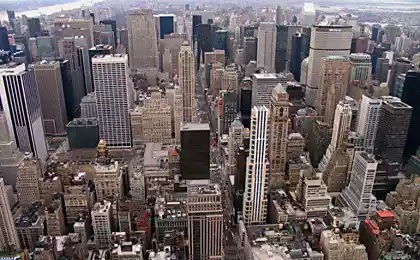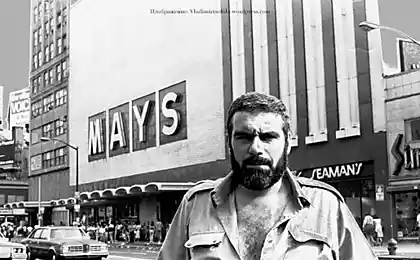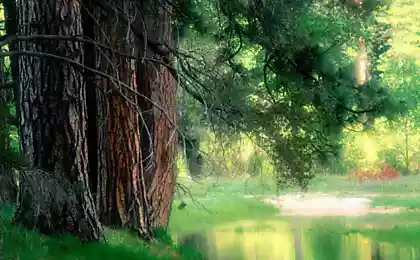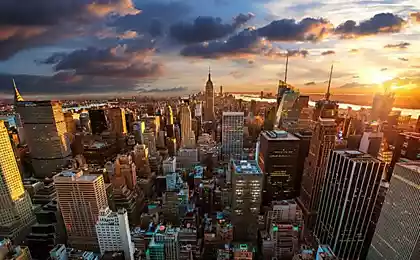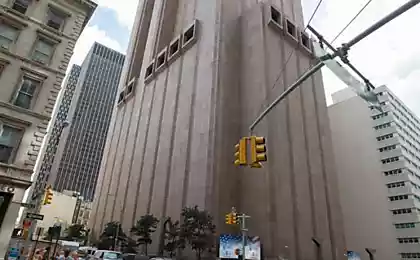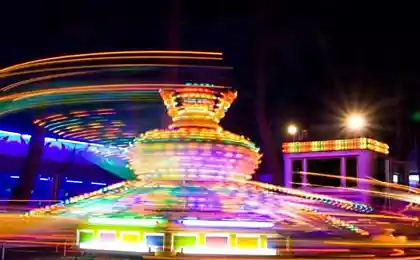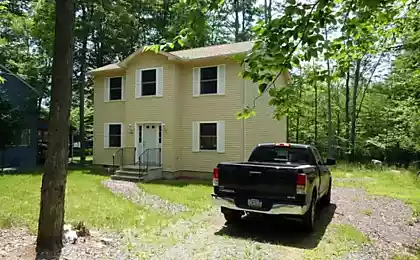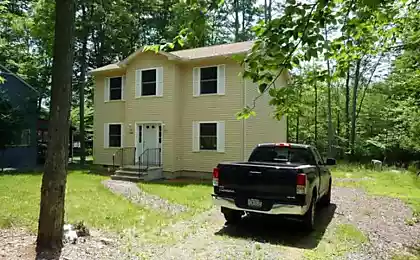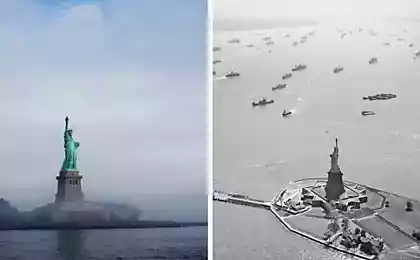1271
The history of Central Park in New York City (20 photos)
Central Park in New York is not the biggest city park not only in the world, the country, but even in the city, behind in the park in the Bronx and Queens; not the oldest park in the United States, created a lot
the first ten years after the parks in Boston and Philadelphia; and even, according to his own best architects, not the most beautiful park in New York, giving Prospect Park in Brooklyn. However, without exaggeration, that Central Park
is the most famous and important city park in the United States.
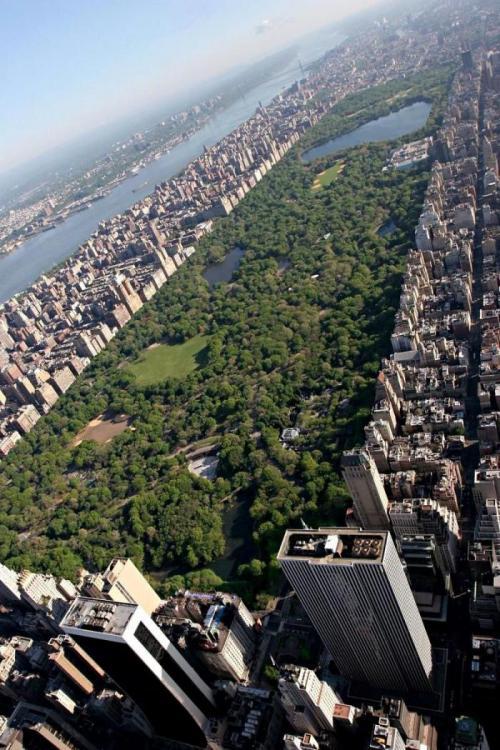
Park is located on the island of Manhattan between 59th and 110th Street and Fifth and Eighth avenues, and thus has a rectangular shape. Length Park - 4 km, width - 800 meters, total area - 3, 4 km2. The park is visited approximately 25 million people per year, it is the most visited park in the United States, and its showing in many films and television shows make the park one of the most famous in the world. Park served by the Committee on the Protection of Nature Park Central heating (Eng. Central Park Conservancy), a private, nonprofit organization that manages the park under a contract with the Department of Parks and Recreation (Eng. Department of Parks and Recreation) in New York City.
The park is entirely man-made, although it looks like a natural. The park contains several natural-looking lakes and ponds that have been created artificially, extensive walking trails, two ice rink for ice-skating rink (one of which is a swimming pool in July and August), Central Park Zoo, Garden Central Park, a wildlife sanctuary, a large area natural forests, Theater Delacorte, which takes the summer festivals. Central Park, the sights are: Castle Belvedere, the Swedish Cottage Marionette Theatre, and the historic Carousel. In addition, there are seven main lawns and many playgrounds for children. Let's learn how it was created ...

From 1820 to 1850 the population of New York City has quadrupled, and even at that time, becoming the largest financial and industrial center of the country, urban areas were required public recreational facilities. City limits
limited while modern 39th Street in the mid-fifties of the nineteenth century, the authorities have allocated a huge plot of marshy land that lay outside the city and populated mostly by farmers. By the way, Harlem, which borders the park to the north, was then a separate city, and to New York had a very indirect relationship.
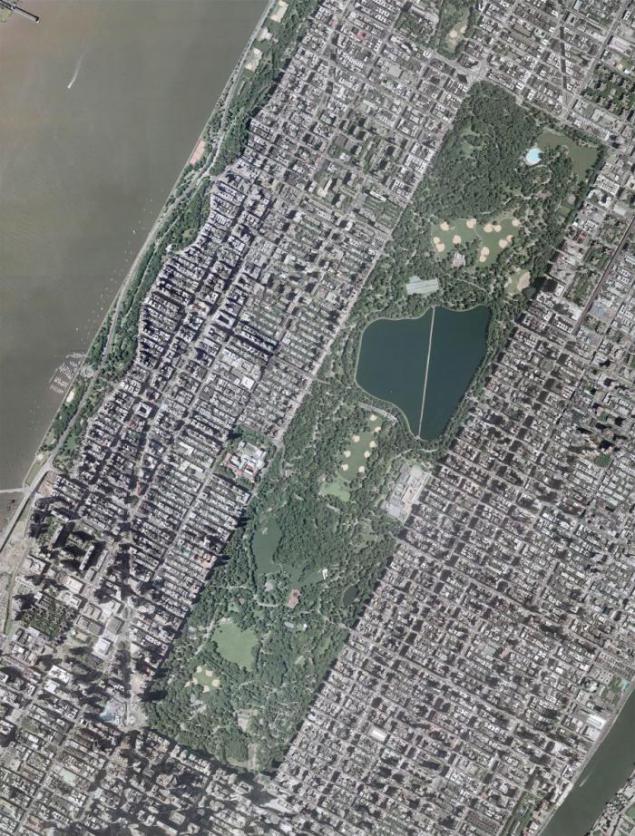
In 1857, the competition was held, which was won by two architects - American * Frederick Law Olmsted * Englishman * Calvert Vaux *, education and practice in Europe (in the United States at that time there was no school, specializing in landscape and park design). At the heart of the project was the idea of creating a park in the English style, with a lot of wagging paths, gardens, hills and ponds. This is different, for example, from the classic French style with a large central promenade, an abundance of flower beds and fountains, more suitable for the park at the palace. However, this project stood more, the authors tried to express to create this park.
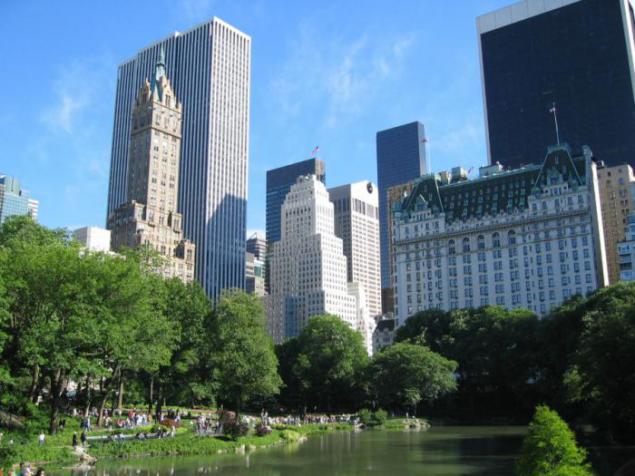
As has been said by the middle of the 19th century, New York has become a major world center got stronger with the middle and upper classes and the poor and less numerous workers. The other world capitals such as London and Paris
were parks, where they could spend their leisure all citizens, without exception. In contrast to New York. While access to a few parks and gardens of the city had only a limited number of people - wealthy citizens, members
clubs, business owners. This social injustice excited as the architects and city authorities, which in the end has allocated money for the construction of the park.
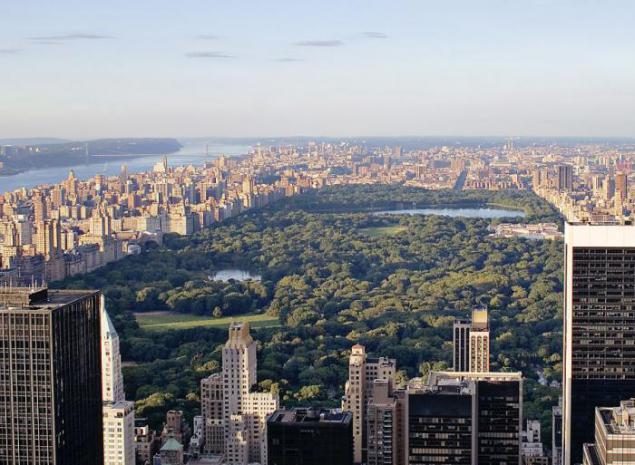
As planned by the architects of Central Park should be the epitome of democratic principles and freedoms *, for which the country has struggled for many years. Social equality - this was the motto and the main idea of the design of the park. This is expressed in particular in a joint parallel (not separate) passing pedestrian paths occupied
mostly poor roads and horse-drawn carriages for the wealthy citizens. * * Central Mall - the only direct avenue leading to the heart of the park * Bethesda terrace *, a wide pedestrian area with benches and places for street performances - also had to be a place of mixing people of different classes.
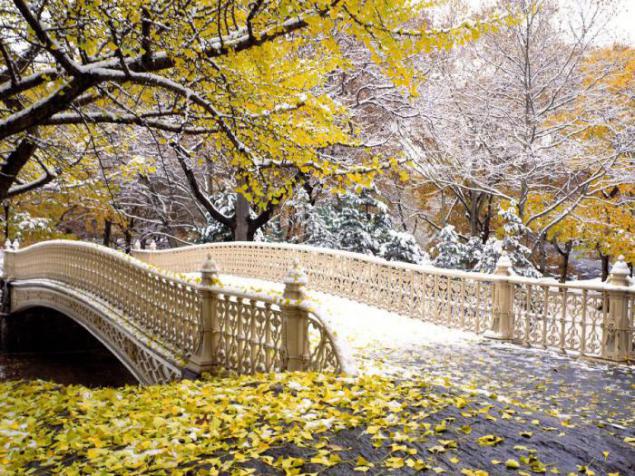
If you look at the entrance to the park, each of them was given a separate name. Architects had the option to call the names of the input group of great people, military battles, the state, but they chose the occupations of ordinary people, thereby paying tribute to the people who participated in the construction of the park. So, there is a gate in the park scientists, artists, artisans, merchants, farmers, hunters, miners, foresters, engineers, inventors, military and others.

But the park - it's not just a work of landscape design. It is also a breakthrough of modern engineering that was supposed to embody here. The first is the four roads that already initially the project, crossing the park from east to west, but lower than the ground level of the park, ie without creating interference not only tourists, but also
never giving out their presence, abundance of bushes fenced. The system of tunnels and bridges, designed in the mid-19th century almost unchanged works now.
Another engineering marvel, which was first used at the time in New York and implemented in Bethesda terrace - is the separation of pedestrian and traffic flows at different levels. The city at that time was full of various transport - especially horse-drawn carriages and no underground or above-ground crossings and traffic lights did not yet exist. In the central park it appeared the first building, which helped to share human and transport flows.
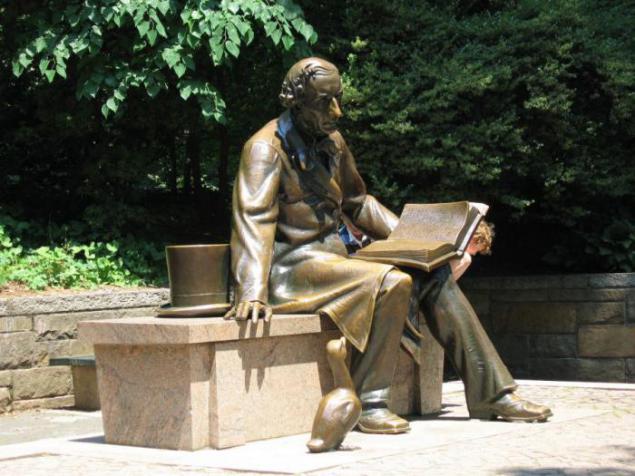
Also, the park was included in the newly built urban water supply for the first time in the history of the city provides an uninterrupted supply of drinking water ... clean water from the Croton River enters the city
through tunnels and aqueducts from a distance of over 100 kilometers. Overpopulated city suffering because of the lack of sewerage and drainage infectious diseases - it was a real
the rescue. With that, a fountain with drinking water was obschedostupen.Krotonskiy akveduk 500x215 Central Park. History of
After the announcement of the winners in 1857, began his immediate construction, which lasted until 1873. During this time the park of 2, 5 to 0, 5 miles (4 to 0, 8 kilometers) were delivered more than 14 thousand cubic meters of fertile land, planted more than 4 million plants 1,400 species, organized alleys, gardens, artificial rectangular tank ( which was subsequently dried and in its place now stands * Great Lawn *), children's playground, carousel, boat station, 2 playgrounds for skating and more. For the first time since the founding of the United States, it was completely available to all residents of the city.
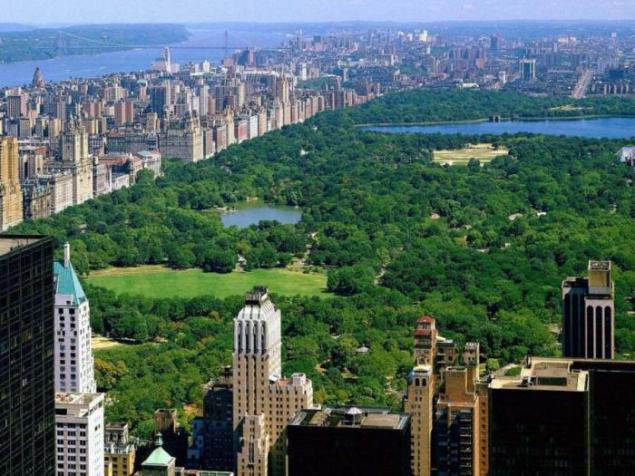
Initially, the park has only one statue - this * Angel of the waters *. Gradually, however, the peoples who inhabited the city at that time began to give the park the statue of the most outstanding representatives of art in their countries. So
in the park there were statues of Beethoven, Scott, Shakespeare and others. And it was also a manifestation of the democratic features on the one hand and shows national diversity of New York on the other. Simultaneously
Park replenished statues of national heroes of the Civil voyny.Statui v TSentralnom parke 500x337 Central Park.
Between 1860 and 1873 years of construction of the park was delayed much, and most of the basic ideas had to be revised. At this time, more than 14 000 m3 of fertile soil was brought from the state of New Jersey, as the local land is not suitable for many trees, shrubs and other plants, provided the original plan. When in 1873 the construction of the park was officially completed, more than 10 million trucks of material, including earth and rock were excavated and removed from the territory. It also included more than 4 million trees, shrubs and other plants, representing about 1 500 species.
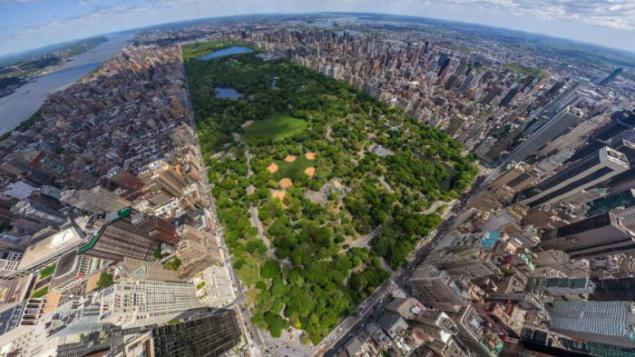
Shortly after opening, the park began to decline. One of the main reasons for this was the infamous political machine known as Tammany Hall, at the time the biggest political force and New York. And as it was due to both the appearance of the vehicle as a new vehicle and the death of one of the founders of the park Vox in 1895, which is the end of life he followed his state. The city ceased to allocate money for the maintenance of the park, there was no one to replace old trees, shrubs, lawns and monitor the playgrounds, the police stopped patrolling the territory, and eventually in the park has increased urovenprestupnosti.
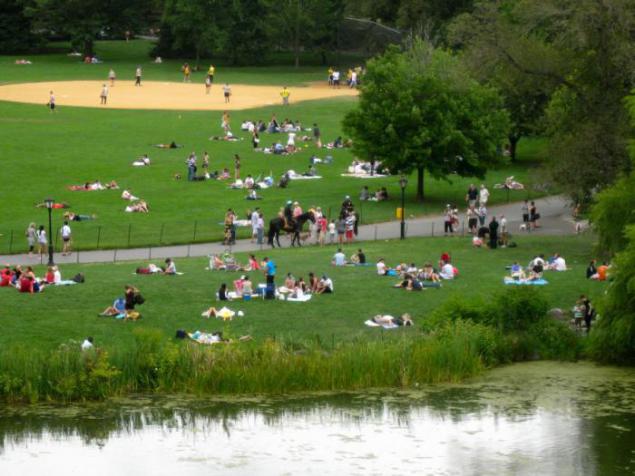
The situation changed when the mayor of the city in 1934 became Fiorello La Guardia, who was appointed to the post of manager Robert Moses Park * *. When Moses park gained a new life, with several changing concept. Since the mid-1930s, the park is not just a place for walking, but also for recreational activities of citizens. Built playgrounds * * (for the game of baseball, handball, football), basketball and tennis courts, drained Croton reservoir (the same one that was on the site of the modern Great Lawn).
In the 60s, after the departure of Moses, the park again loses the attention of the authorities and appropriate funding. At this time the park is used primarily as a place for meetings, concerts, demonstrations, folk festivals. Due to lack of funding the police less and less frequently patrol the park, there are graffiti, no one to clean up the garbage, again increasing crime, prostitution, drug trafficking. All this reaches its peak in the 70s ...
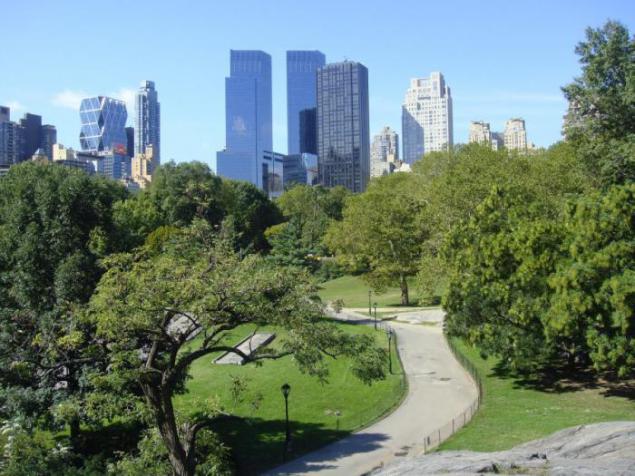
By 1975, some advocacy groups have joined forces to offer new ideas how to build the park. As a result, in 1980 and formed the Committee for the Conservation of Nature.
When the Committee began its work, the founders decided not to create a new organization with specially employed workers, which would lead to higher costs. Instead, they decided to focus their attention on attracting volunteers for most of the work, so the spacecraft it would help attract residents to more careful attitude to the park, as well as to create the impression that the park is one of the integral parts of New York.
The Committee began to interact with the Commissioner for the park, and committed itself to the restoration and improvement of the park, having published in 1981 a document entitled "Reconstruction of Central Park at 80th and subsequent years." The document was presented as a master plan for the further development of the park and described the steps to be taken to restore the park to its former glory.
The document included the three key tasks necessary for future survival. The architectural heritage was to be restored - not only the landscape and the environment, but also bridges, buildings and other buildings that have fallen victim to neglect for 20 years. In addition, the document called for a significant transplant across the grass and constant care of each area of the park, as well as the creation of programs to improve safety in the park, especially at night - and thus attract new visitors.
During the work of the organization park was almost completely reconditioned. Again, the work of organized sports and playgrounds, planted new trees, flowers, lawns, renovated buildings and bridges, and established police surveillance. The basic idea was to attract volunteers who were ready to free some time to work for the benefit of the park. Today the organization provides more than 80 percent of the 40 million budget and manages the park, about 80 percent of the staff.

Over the years, many buildings have been restored, and the many hours spent on the restoration of the park. In 2004 alone, more than 32 volunteers spent 000 hours, including restoring the playground Heckscher, several lawns and stone elevation.
Today, Central Park - is one of the most visited places in New York, with more than 25 million visitors a year. This city park, located between 59th and 110th Streets and 5th and 8th Avenue, the size almost twice exceeding the Principality of Monaco, with more than 80 kilometers of hiking and 10 km of cross-country tracks, 36 unique design with stone and iron bridges, several open-air theater, a tennis center, a variety of free outdoor sports facilities and many others. It is very important that it not only
tourist attraction, but also a favorite vacation spot of New Yorkers themselves.
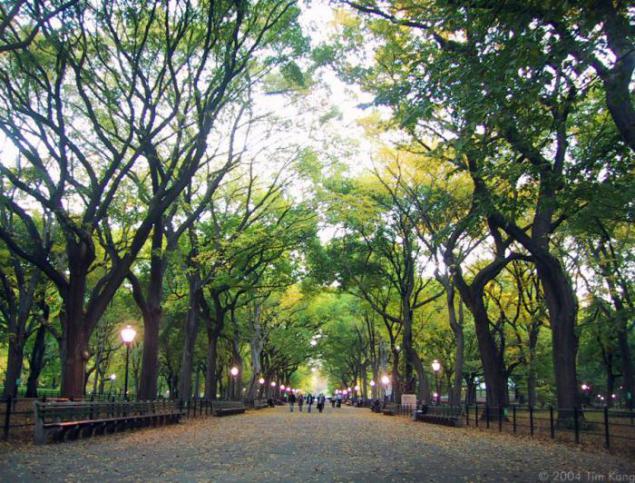
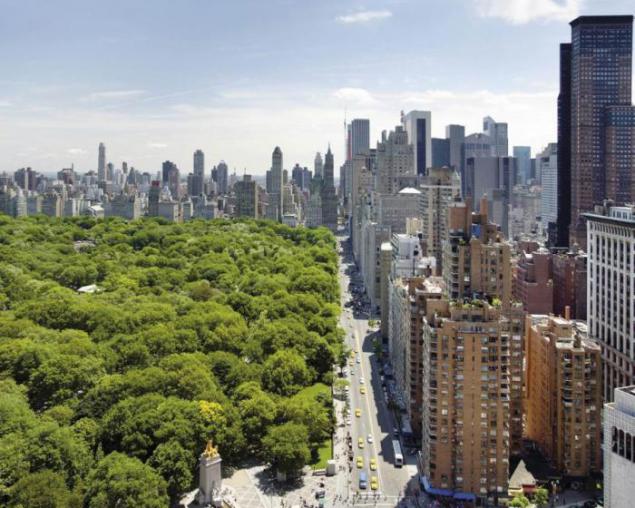

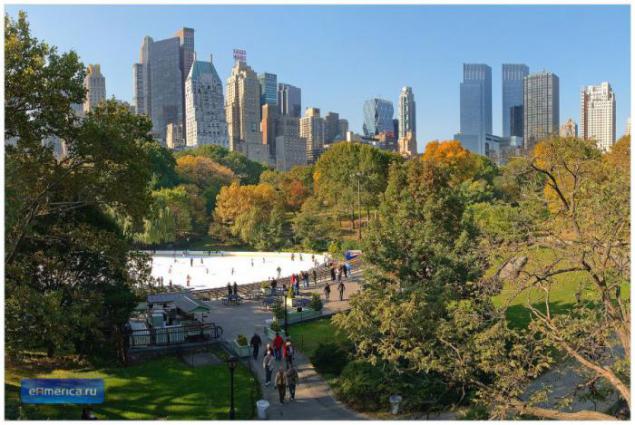
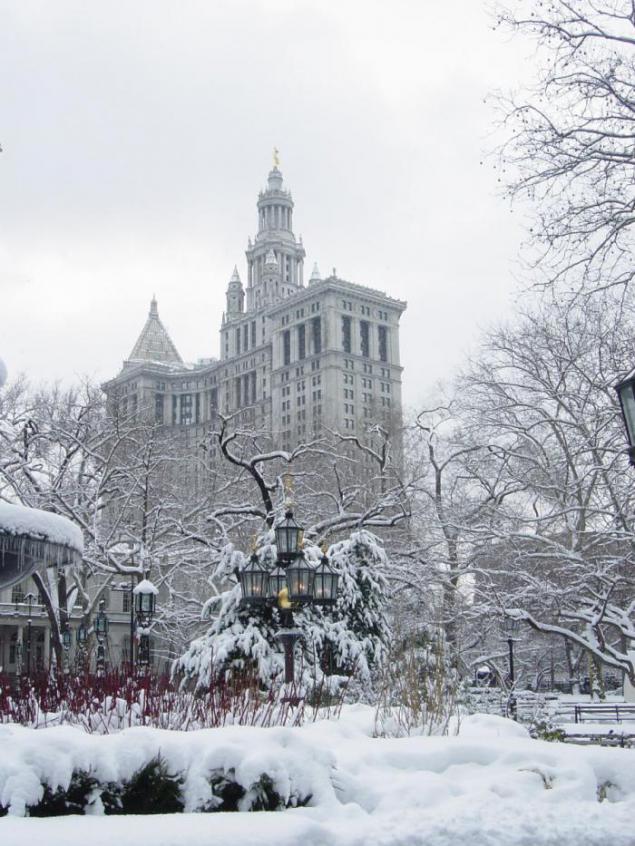
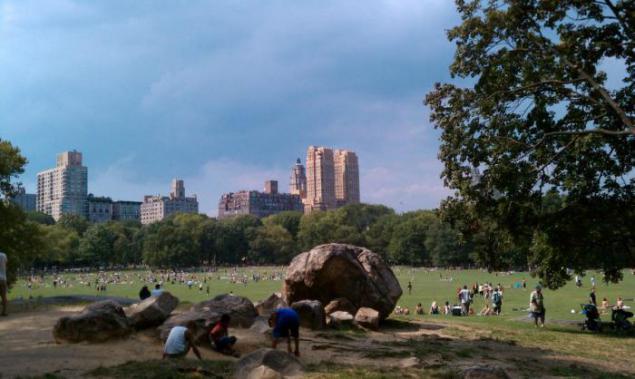
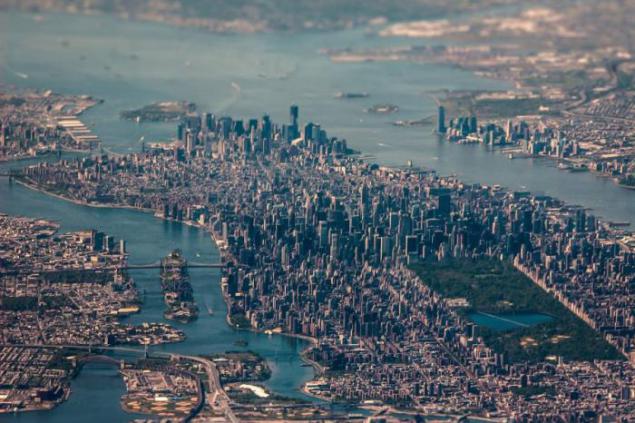
the first ten years after the parks in Boston and Philadelphia; and even, according to his own best architects, not the most beautiful park in New York, giving Prospect Park in Brooklyn. However, without exaggeration, that Central Park
is the most famous and important city park in the United States.

Park is located on the island of Manhattan between 59th and 110th Street and Fifth and Eighth avenues, and thus has a rectangular shape. Length Park - 4 km, width - 800 meters, total area - 3, 4 km2. The park is visited approximately 25 million people per year, it is the most visited park in the United States, and its showing in many films and television shows make the park one of the most famous in the world. Park served by the Committee on the Protection of Nature Park Central heating (Eng. Central Park Conservancy), a private, nonprofit organization that manages the park under a contract with the Department of Parks and Recreation (Eng. Department of Parks and Recreation) in New York City.
The park is entirely man-made, although it looks like a natural. The park contains several natural-looking lakes and ponds that have been created artificially, extensive walking trails, two ice rink for ice-skating rink (one of which is a swimming pool in July and August), Central Park Zoo, Garden Central Park, a wildlife sanctuary, a large area natural forests, Theater Delacorte, which takes the summer festivals. Central Park, the sights are: Castle Belvedere, the Swedish Cottage Marionette Theatre, and the historic Carousel. In addition, there are seven main lawns and many playgrounds for children. Let's learn how it was created ...

From 1820 to 1850 the population of New York City has quadrupled, and even at that time, becoming the largest financial and industrial center of the country, urban areas were required public recreational facilities. City limits
limited while modern 39th Street in the mid-fifties of the nineteenth century, the authorities have allocated a huge plot of marshy land that lay outside the city and populated mostly by farmers. By the way, Harlem, which borders the park to the north, was then a separate city, and to New York had a very indirect relationship.

In 1857, the competition was held, which was won by two architects - American * Frederick Law Olmsted * Englishman * Calvert Vaux *, education and practice in Europe (in the United States at that time there was no school, specializing in landscape and park design). At the heart of the project was the idea of creating a park in the English style, with a lot of wagging paths, gardens, hills and ponds. This is different, for example, from the classic French style with a large central promenade, an abundance of flower beds and fountains, more suitable for the park at the palace. However, this project stood more, the authors tried to express to create this park.

As has been said by the middle of the 19th century, New York has become a major world center got stronger with the middle and upper classes and the poor and less numerous workers. The other world capitals such as London and Paris
were parks, where they could spend their leisure all citizens, without exception. In contrast to New York. While access to a few parks and gardens of the city had only a limited number of people - wealthy citizens, members
clubs, business owners. This social injustice excited as the architects and city authorities, which in the end has allocated money for the construction of the park.

As planned by the architects of Central Park should be the epitome of democratic principles and freedoms *, for which the country has struggled for many years. Social equality - this was the motto and the main idea of the design of the park. This is expressed in particular in a joint parallel (not separate) passing pedestrian paths occupied
mostly poor roads and horse-drawn carriages for the wealthy citizens. * * Central Mall - the only direct avenue leading to the heart of the park * Bethesda terrace *, a wide pedestrian area with benches and places for street performances - also had to be a place of mixing people of different classes.

If you look at the entrance to the park, each of them was given a separate name. Architects had the option to call the names of the input group of great people, military battles, the state, but they chose the occupations of ordinary people, thereby paying tribute to the people who participated in the construction of the park. So, there is a gate in the park scientists, artists, artisans, merchants, farmers, hunters, miners, foresters, engineers, inventors, military and others.

But the park - it's not just a work of landscape design. It is also a breakthrough of modern engineering that was supposed to embody here. The first is the four roads that already initially the project, crossing the park from east to west, but lower than the ground level of the park, ie without creating interference not only tourists, but also
never giving out their presence, abundance of bushes fenced. The system of tunnels and bridges, designed in the mid-19th century almost unchanged works now.
Another engineering marvel, which was first used at the time in New York and implemented in Bethesda terrace - is the separation of pedestrian and traffic flows at different levels. The city at that time was full of various transport - especially horse-drawn carriages and no underground or above-ground crossings and traffic lights did not yet exist. In the central park it appeared the first building, which helped to share human and transport flows.

Also, the park was included in the newly built urban water supply for the first time in the history of the city provides an uninterrupted supply of drinking water ... clean water from the Croton River enters the city
through tunnels and aqueducts from a distance of over 100 kilometers. Overpopulated city suffering because of the lack of sewerage and drainage infectious diseases - it was a real
the rescue. With that, a fountain with drinking water was obschedostupen.Krotonskiy akveduk 500x215 Central Park. History of
After the announcement of the winners in 1857, began his immediate construction, which lasted until 1873. During this time the park of 2, 5 to 0, 5 miles (4 to 0, 8 kilometers) were delivered more than 14 thousand cubic meters of fertile land, planted more than 4 million plants 1,400 species, organized alleys, gardens, artificial rectangular tank ( which was subsequently dried and in its place now stands * Great Lawn *), children's playground, carousel, boat station, 2 playgrounds for skating and more. For the first time since the founding of the United States, it was completely available to all residents of the city.

Initially, the park has only one statue - this * Angel of the waters *. Gradually, however, the peoples who inhabited the city at that time began to give the park the statue of the most outstanding representatives of art in their countries. So
in the park there were statues of Beethoven, Scott, Shakespeare and others. And it was also a manifestation of the democratic features on the one hand and shows national diversity of New York on the other. Simultaneously
Park replenished statues of national heroes of the Civil voyny.Statui v TSentralnom parke 500x337 Central Park.
Between 1860 and 1873 years of construction of the park was delayed much, and most of the basic ideas had to be revised. At this time, more than 14 000 m3 of fertile soil was brought from the state of New Jersey, as the local land is not suitable for many trees, shrubs and other plants, provided the original plan. When in 1873 the construction of the park was officially completed, more than 10 million trucks of material, including earth and rock were excavated and removed from the territory. It also included more than 4 million trees, shrubs and other plants, representing about 1 500 species.

Shortly after opening, the park began to decline. One of the main reasons for this was the infamous political machine known as Tammany Hall, at the time the biggest political force and New York. And as it was due to both the appearance of the vehicle as a new vehicle and the death of one of the founders of the park Vox in 1895, which is the end of life he followed his state. The city ceased to allocate money for the maintenance of the park, there was no one to replace old trees, shrubs, lawns and monitor the playgrounds, the police stopped patrolling the territory, and eventually in the park has increased urovenprestupnosti.

The situation changed when the mayor of the city in 1934 became Fiorello La Guardia, who was appointed to the post of manager Robert Moses Park * *. When Moses park gained a new life, with several changing concept. Since the mid-1930s, the park is not just a place for walking, but also for recreational activities of citizens. Built playgrounds * * (for the game of baseball, handball, football), basketball and tennis courts, drained Croton reservoir (the same one that was on the site of the modern Great Lawn).
In the 60s, after the departure of Moses, the park again loses the attention of the authorities and appropriate funding. At this time the park is used primarily as a place for meetings, concerts, demonstrations, folk festivals. Due to lack of funding the police less and less frequently patrol the park, there are graffiti, no one to clean up the garbage, again increasing crime, prostitution, drug trafficking. All this reaches its peak in the 70s ...

By 1975, some advocacy groups have joined forces to offer new ideas how to build the park. As a result, in 1980 and formed the Committee for the Conservation of Nature.
When the Committee began its work, the founders decided not to create a new organization with specially employed workers, which would lead to higher costs. Instead, they decided to focus their attention on attracting volunteers for most of the work, so the spacecraft it would help attract residents to more careful attitude to the park, as well as to create the impression that the park is one of the integral parts of New York.
The Committee began to interact with the Commissioner for the park, and committed itself to the restoration and improvement of the park, having published in 1981 a document entitled "Reconstruction of Central Park at 80th and subsequent years." The document was presented as a master plan for the further development of the park and described the steps to be taken to restore the park to its former glory.
The document included the three key tasks necessary for future survival. The architectural heritage was to be restored - not only the landscape and the environment, but also bridges, buildings and other buildings that have fallen victim to neglect for 20 years. In addition, the document called for a significant transplant across the grass and constant care of each area of the park, as well as the creation of programs to improve safety in the park, especially at night - and thus attract new visitors.
During the work of the organization park was almost completely reconditioned. Again, the work of organized sports and playgrounds, planted new trees, flowers, lawns, renovated buildings and bridges, and established police surveillance. The basic idea was to attract volunteers who were ready to free some time to work for the benefit of the park. Today the organization provides more than 80 percent of the 40 million budget and manages the park, about 80 percent of the staff.

Over the years, many buildings have been restored, and the many hours spent on the restoration of the park. In 2004 alone, more than 32 volunteers spent 000 hours, including restoring the playground Heckscher, several lawns and stone elevation.
Today, Central Park - is one of the most visited places in New York, with more than 25 million visitors a year. This city park, located between 59th and 110th Streets and 5th and 8th Avenue, the size almost twice exceeding the Principality of Monaco, with more than 80 kilometers of hiking and 10 km of cross-country tracks, 36 unique design with stone and iron bridges, several open-air theater, a tennis center, a variety of free outdoor sports facilities and many others. It is very important that it not only
tourist attraction, but also a favorite vacation spot of New Yorkers themselves.







